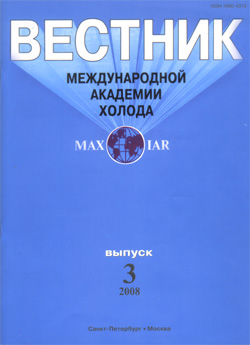
Justification of the resulting comfortable temperature parameter

Annotation
Heating, ventilation, and air conditioning professionals use thermal comfort indices to measure and compare thermal conditions. In this paper, indices of thermal comfort frequently used are given, and the parameter of the resulting temperature is refined using matrices of isocomfortable parameters which developed as a result of solving the problem of ensuring a given level of thermal comfort in accordance with the method proposed by P.O. Fanger and standardized in the ISO 7730 standard. The weight coefficients proposed by 30494-2011 State Standard were tested using the matrices of isocomfortable parameters. This article provides comparative tables and graphs, whcih prove that the weighting factors proposed by the international standard are not accurate enough. Based on the physical meaning of the parameter of the resulting temperature it was assumed that, for each value of air mobility, the same values of the resulting comfortable temperature were supposed to obtain. During the analysis of the data obtained, it was revealed that the standard deviation of the resulting comfortable temperature is a value of up to 0.5 ° C. This fact proves that more accurate weighting factors should be used to obtain more accurate comfort temperature results. As a result of the study, a new mathematical dependence was proposed and a new concept of the resulting comfortable temperature was introduced. The obtained mathematical dependence allows high accuracy in calculating the resulting comfortable temperature taking into account the comfortable combination of such parameters as air temperature and average radiation temperature, depending on the amount of air velocity in the room.
Keywords
Постоянный URL
Articles in current issue
- Unsteady effects in cryogenic fuel pipelines of perspective aviation jet engines
- Comparative analysis of the efficiency of refrigeration machine cycles
- Methodology and results of calculating a low-tonnage medium-pressure cycle with a turbo-expander operating at a differential pressure for the production of liquefied natural gas
- Justification of the resulting comfortable temperature parameter
- Developing a scheme for the utilization system of condensation heat from refrigerating machines to decrease the dependency of ice arena on municipal systems of heating and hot water supply
- Selection of cryogenic tanks for modernization of small-scale LNG carriers
- Research and rational use of peptide and lipid compositions obtained by hydrolysis processing of collagen-containing tissues
- Mannan: structure, biosynthesis, and methods extraction from yeast Saccharomyces cerevisiae
- The properties of edible packaging based on apple puree with addition of dried fruit and vegetable raw materials
- Assessment of apricots suitability for shock freezing according to physical and technological quality indicators
- Methodology for calculating heating modes of building structures in an internal fire
- Mathematical modeling and research of a thermoelectric system for extracting foreign object from the human body by freezing
- Mathematical modelling of soil freezing on the basis of experimental data
